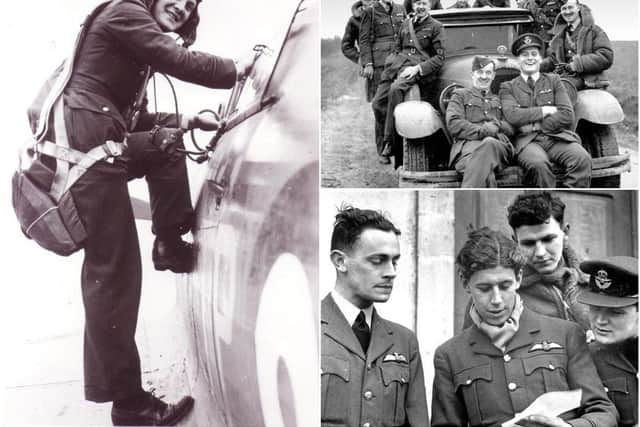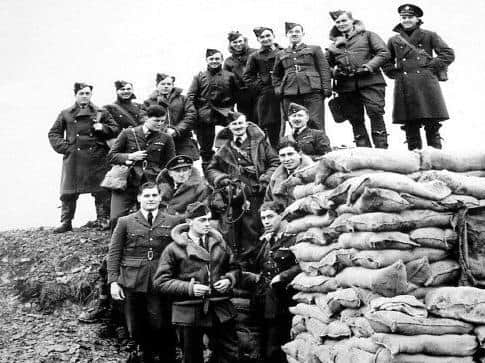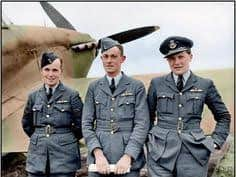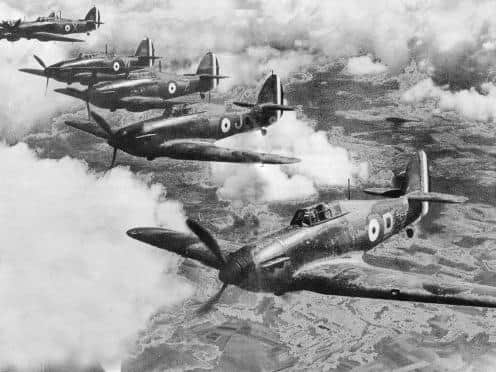Unlocking Warwick researchers trying to get in touch with family of WW2 flying ace
and live on Freeview channel 276
Can you help the researchers from Unlocking Warwick to find the grandson of WW2 flying ace Newell Orton who is commemorated on the War Memorial in Warwick’s Church Street?
Newell lived with his family at 56 Bridge End in Warwick. His father had founded G. Orton and Company in Emscote Road.
Advertisement
Hide AdAdvertisement
Hide AdAt the age of 18, Newell enlisted in the RAF and was to become the first pilot to be awarded both the Distinguished Flying Cross (DFC) and Bar in World War II.


In 1938 he married Helen Eddy and they had a son, David, just before war broke out.
Nicknamed ‘Fanny’ by his air force colleagues, Newell was with 73rd Squadron of Hurricanes assigned to the airfield at Rouvres-en-Woëvre in Eastern France, close to the German border, as part of the Advanced Air Striking Force.
He was awarded the DFC in 1940 after shooting down two Messerschmitt 109s while he was wounded and his plane had been hit four times.
Advertisement
Hide AdAdvertisement
Hide AdThe citation speaks of his ‘skill and determination in a number of combats’.


By May 1940 he had shot down five aircraft, but on May 15 he had to bale out of his blazing Hurricane. He landed in a tree and French soldiers, thinking he was a German pilot, shot at him and injured him further.
On June 18, in the face of the German blitzkrieg advance into France, the squadron had to retreat back to Britain.
After recovering back home, he was given command of No. 54 Squadron flying Spitfires.
Advertisement
Hide AdAdvertisement
Hide AdOn September 17, 1941, at the age of 24, Squadron Leader Orton failed to return from a mission across the Channel.


By then, ‘Fanny’ Orton was regarded as a ‘Flying Ace’, having been credited with 17 enemy aircraft destroyed, eight probables and four damaged.
Now the Unlocking Warwick research team has been contacted by a French historian, Francois Clauvelin, who has compiled a detailed account of the 73rd Squadron’s exploits in France using memoirs of those involved and has assembled some unusual photographs.
The stories he has recorded tell of relentless aerial battles with German bombers and fighters, damaged aircraft and crash-landings, freezing weather in the winter of 1939-1940, and featureless terrain that made navigation difficult.
Advertisement
Hide AdAdvertisement
Hide AdOne young pilot got lost on patrol and landed in neutral Luxembourg, thinking it was France.


He was promptly imprisoned, but on a foggy night managed to slip past his captors and escape into France.
In 2004 the French historian Clauvelin met Newell Orton’s son, David, who followed his father into the RAF, and Newell’s young grandson, at the unveiling of a memorial in Rouvres-en-Woëvre to the RAF pilots who served there.
He wrote: “David Orton gave me his address in Barnard’s Castle, but Warwick Town Council there says he died in 2012. It is very important for me to find the grandson who has some personal photos which should be in the book I am compiling for the new generations who don’t know this part of history.”
Advertisement
Hide AdAdvertisement
Hide AdChristine Shaw, Unlocking Warwick’s project leader, said: “It would be wonderful if someone is still in touch with the Orton family, once of Bridge End, and in particular the grandchildren of Squadron Leader Orton, so that Monsieur Chauvelin can include more pictures in his history of the squadron, and more information about the extraordinary bravery of Newell ‘Fanny’ Orton.
“We know there were at least two grandsons and three great-grandsons, but we don’t know their names.
“The French historian has sent us some of the photographs he has compiled so far.
“This air base near enemy lines was visited several times by journalists who wrote morale-boosting articles about our boys in the front line, particularly for the London Illustrated News, and he found some excellent pictures in their archive.
Advertisement
Hide AdAdvertisement
Hide Ad“You can see the profiles of the Warwick men who died in WW2 on the War Memorial website www.warwickwarmemorial.org.uk
“We are still hoping to find photographs of all the 112 men whose names are on the WW2 plaques.
“If you can help, email me at [email protected] .”